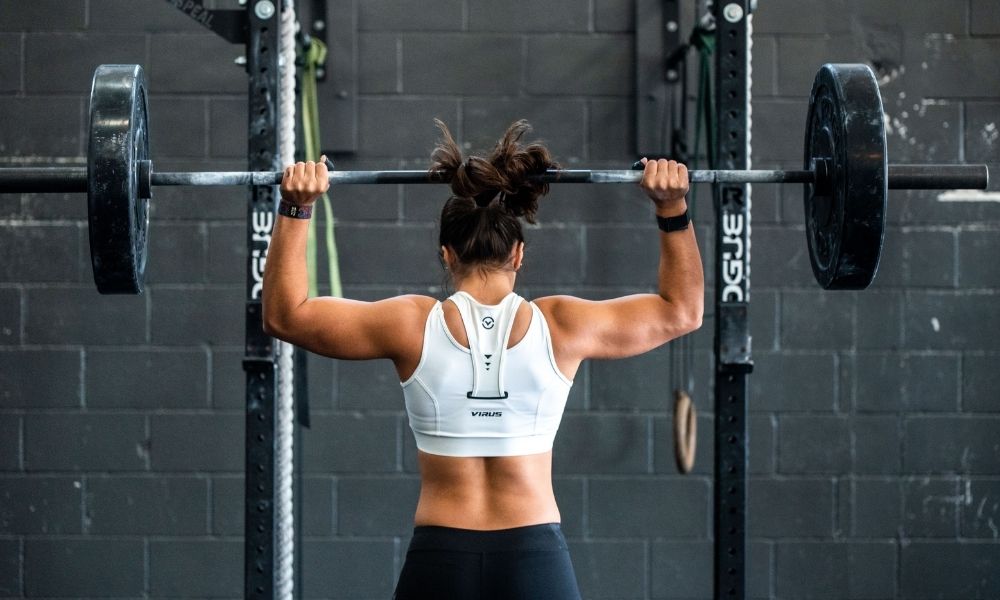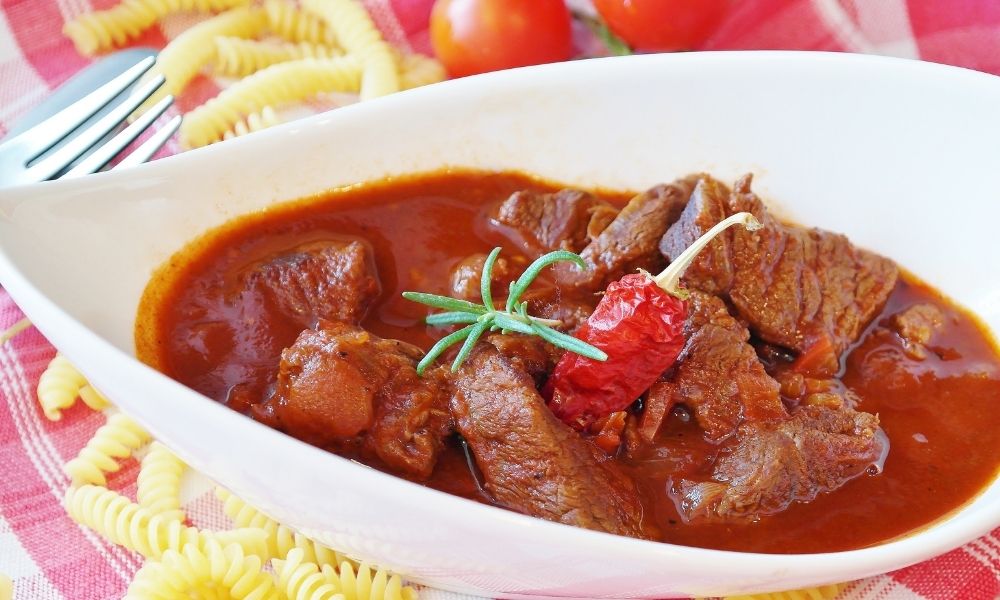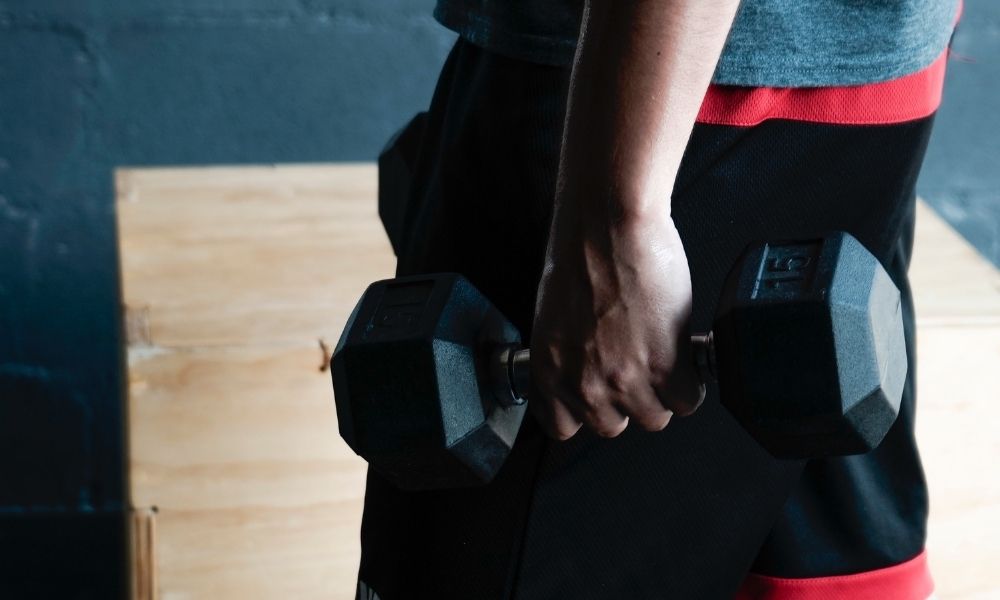Looking for tips on how to get bigger forearms? Below, we cover the top 9 tips needed to boost your gains and get shredded, vascular forearms.
Bodybuilders and gym rats will tell you some body parts bulk up faster than others. One of the more common plateaus you may face in your gains is in your forearms, which can easily lag behind your biceps and triceps. And, if you’re like many fitness buffs and wondering how to get bigger forearms, fret not. Below are ways you can build up guns for days.
View in gallery
Three FAQs on Getting Bigger Forearms
Before we get to our bodybuilding tips, let’s address three of the most common questions surrounding forearm muscle growth (or lack thereof).
-
Why are my forearm muscles not growing?
A beginner will enjoy an initial growth of the forearm muscles when they begin their strength training. All those rows will train their elbow flexors; the wrist flexor muscles will bulge, all thanks to the bicep curls; and the lateral raises will bulk up the wrist extensors.
Over time, though, forearm muscles will need much more than compound lifts to stoke any further response in muscle growth. If you do not isolate your muscles for further activation, they will not reach their full potential.
-
Are big forearms a result of genes?
Most people believe that big guns are a result of a person’s genetic makeup. While it may be true that genes might play a role in the size of forearm muscles, they are not the be-all-end-all determinants of bigger forearm muscle growth. The right exercises can build massive forearm muscles.
-
Why do some men have bigger forearm muscles without gym work?
If you were to empirically study the blue-collar physique from days past, you’d notice many men have massive forearms. Older tradespeople, laying brick or plumbing or in carpentry have had decades of arm work that specifically targets the forearm muscles.
Mechanics and lumberjacks, for example, will naturally have decent forearms. Should they work those muscles further in the gym, they will quickly develop bulges on their forearms. Their line of work naturally complements even compound workouts, so they can still see gains without as much isolation work.
Now, if you are a pencil pusher looking for forearm gains, then you will need to put in the right effort. Start by first understanding the anatomy of your forearm muscles, then work out how to target them effectively.
9 Steps To Getting Bigger Forearms
1. Understand the Anatomy of the Forearm
View in gallery
Your forearms are your glamour and glory muscles. Wear short sleeves and they are the first thing that people will see when they look at you.
But if you are wondering how to get bigger forearms, you need to understand the type of muscle fibers that are on your forearm and the exercises that stimulate them. They include the brachioradialis, wrist flexors, and wrist extensors:
-
Brachioradialis
The main forearm muscles in terms of size, brachioradialis muscles flex the forearm extending from the elbow. They activate when your arm makes sudden movement or when you are lifting heavy objects. Brachioradialis muscle fibers are the fast switch type, and do not create as much force on movement as the biceps.
You can consider them elbow stabilization muscles that keep the hand stable when in mid-position. They are therefore at their most active when you are doing tasks such as hammering. Additionally, brachioradialis can supinate or pronate.
The brachioradialis is not only the largest forearm muscle but is superficial as well. Thus, working them will make the largest impression on your forearm’s appearance.
To work out these rather reluctant muscles, you need to perform exercises that isolate them. The best brachioradialis strengthening exercises for the desk jockeys should use a pronated grip. The typical barbell rows and pull-ups are not forearm-focused, but you can tweak them to make them so.
Changing up these exercises to include pronated forearm positions will activate your forearm muscles and significantly influence your biceps as well. Using a pronated grip will however shift most of the attention from the biceps to your forearms. For this reason, you can use exercises like the reverse and hammer curls to blow up your forearms.
While these exercises are wrist-friendly, keep your arm joint at your side when performing them for safety. Also, use light enough weights that will allow you a minimum of four to six reps.
-
Wrist Flexors
The wrist flexors are the muscles that produce wrist movement. These fall into three large muscle groups whose fiber is primarily the slow-twitch kind. To activate these muscle groups, you need to perform movements that combine repetitions and slow contractions.
Avoid pushing your wrist into an unnatural path when training your flexors, as it could cause injury. Hit your wrist flexors with a set of wrist curls but use a behind-the-back orientation for safety. Tat grip and thick barbell training will improve grip and take your flexors to the next level of fit.
Thick dumbbells and barbells introduce a neuromuscular aspect to strength training. They also engage the wrist flexors. For quicker results, pair them with plate pinches, farmer walks, and deadlifts.
-
Wrist Extensors
This group of muscles covers the inner side of the forearms. They are not a large group of muscles, but are often most developed in manual labor workers. While they can only bulk to a certain degree, they can drastically change the shape of your entire forearm.
Activate them with wrist extension movements such as the seating dumbbells and standing barbell wrist extension exercises. Working your extensors will make your forearm thicker. Running the full length of your forearm’s backside, your extensors will add girth when they are in their best shape.
2. Commitment Is Key
The muscles in the forearms are some of the most underrated muscle groups by fitness enthusiasts. When fully developed, bigger forearms will not just look the part but are highly functional as well. Your forearm’s exercise should thus be a vital part of your training regime.
Unfortunately, you cannot just eat spinach like Popeye and have those muscles pop. You need to commit to a life of fitness and lifting for defined muscles. Muscles can grow via hypertrophy when lifting weights.
To define your wrists muscles, you will need to do an amount of lifting, including farmer’s walks and compound lifts. These routines can only define your muscles if you increase your training volume to encourage hypertrophy. This leads us to our next tip on how to get bigger forearms.
3. Increase Your Training Volume
View in gallery
Understand this, more lifting is not the key to popping forearms. You do not need to spend more time in the weights room to increase your training volume. Such measures will only lead to over-training, injury, and slow progress. Your training volume is simply a measure of the amount of work that you have accomplished within an exercise regime.
If you are working your muscles using thick dumbbells and barbells, you need to determine the amount of weight that you have lifted in total. The accumulative amount of weight lifted is a result of the weight of the dumbbells, the reps, and the sets in your regime. Use heavy weights but only run a few reps.
The key to bigger forearms is performing your reps to a point of muscle fatigue, which in turn stimulates the definition and growth of muscles. When building muscle, make sure that your regime pushes you to gradual increase volume in exercise. The end game is, after all, to do more exercises in the future than you are doing right now.
Keep overloading those muscles until you have your results. Gains only come with steady progress, so do not go crazy trying to hit your high training volumes all at once. Avoid those epic training schedules that chase quick size. Adopt patience and incrementally escalate the volume and the intensity of your training.
4. Eat More Protein
View in gallery
You cannot have defined muscles without protein, full stop. There is a reason gym bros live and die by the protein shake bottles: Muscle mass is mostly protein. For this reason, a high protein diet can be a crucial component of your bigger forearm’s journey. After all, protein has the crucial amino acids that aid in muscle repair.
The question is: How much of this macronutrient should you have to bulk up your forearm muscles? Most fitness forums advocate for a gram for each kilo of your weight. But, this recommendation does not factor in variables like age, goals, and level of fitness, so use it as a rough baseline to experiment with what works for you.
Research confirms that this macronutrient also aids weight loss; ingesting more protein can stimulate your body’s metabolic rate, leading to higher calorie burning. A high protein diet cuts down on the hunger pangs that may strike after an intense workout. You will pile on fewer calories as body fat if your diet is rich in proteins.
The dietary recommendation of one gram for every pound of weight may work for the ordinary fitness enthusiast, but it will not do if you are trying to pack on muscle. To bulk your body, you need to take at least two grams for each kilo of your weight.
You especially need this much protein in your diet when you are starting your muscle-building program, when your muscle fibers will be most sore. They will break down more thoroughly, and require ample protein in order to rebuild.
With this ideal muscle-building diet set and an understanding of your forearms’ anatomy, now you are ready for the exercises that will help you grow bigger forearms.
5. Perform Barbell Wrist Curls
Wrist curls might be a staple at the gym, but most people perform them incorrectly. First, only use weights that allow you a full range of motion. If you let your pride take rein of your exercise regime, you will end up with wrist injuries. Kneel by your flat bench and have the bench support your forearms.
Use an underhand grip to grab your barbell. Curl your hand as high as you can and lower your barbell, letting it roll off the fingertips. Performing your barbell wrist curls in this style will activate all your forearm fibers. Try out 30 reps of four sets of barbell wrist curls.
6. Perfect Your Barbell Wrist Curls (Reverse)
These reverse barbell wrist curls are a tad complicated if you compare them to the common wrist curls, but they are well worth the effort. Should your gym have a wrist curl machine, use it. If not, have a bench at your side for this exercise.
Performing these wrist curls involves lightweight lifting. Place your thumbs over-grip of the barbell, then use the overhand monkey grip to grab the bar. Use these curls to activate your forearm muscles. Perform 15 reps of 3 sets of reverse barbell wrist curls.
7. Do The Cable Wrist Curls – Behind the Back Style
Back cable curls will isolate your small guns by creating a constant source of tension. To perform this exercise, turn your back to the cable pulley machine. Take hold of the bar and curl it. Do not let go of the movement to give your brachioradialis and wrist flexor a few seconds of muscle contraction. Try out 12 repetitions, 3 sets each.
8. Don’t Forget The Farmer’s Walk Using Dumbbells
View in gallery
This is a classic exercise for forearm muscle builders. Farmer’s walks can enhance grip strength and fill out your forearm’s mass. It is also a simple exercise and all you need is to pick up your weights then walk. Keep walking until you cannot hold your dumbbells steady any longer.
Focus your energy on keeping your grip and take short strides. Your forearms should remain as tight as possible during your walk. Try out three sets of the farmer’s walk with grips.
9. Perform Barbell Curls with Reverse Grip
Barbell Curls are the foundation movements for forearm muscle building. Performing them using a reverse grip will build forearm strength and muscle mass. Few lifts can isolate your brachioradialis muscles as these reverse grip barbell curls can. They will also build a fantastic pump since they are easy to do and allow many reps.
To perform the reverse grip barbell curl, use a monkey grip overhand to grab your weights. This grip will activate your muscles, forcing them to work hard. Pinch your elbows to your side and curl the weight. Perform three sets with 12 reps each slowly and in a controlled manner.
Conclusion: How to Get Bigger Forearms
Building bigger forearms is not an overnight job, but a work of patience. Begin today and gain your optimum forearm size, through isolation training, determination, and a great diet.
We’ve given you insight as to the structure of your forearms, and how to target those muscle groups effectively with exercises. Moreover, we’ve rounded out your gains strategy that will have you on the road to ripped forearms.




